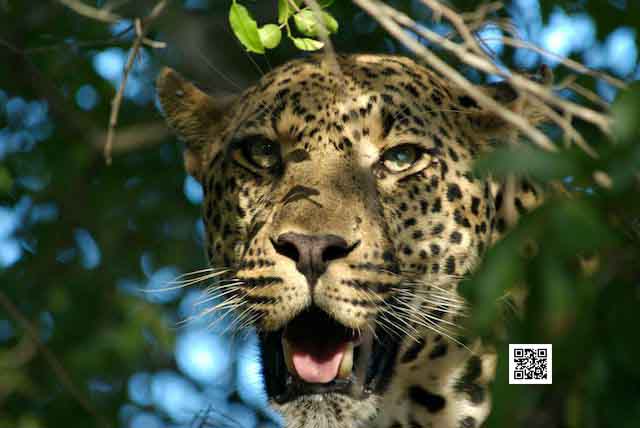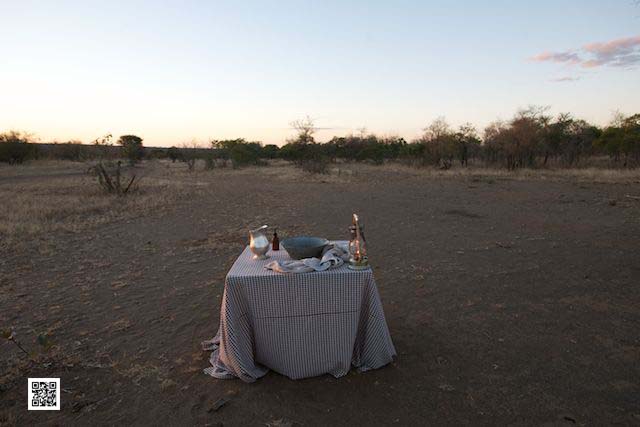22 July 2012
Who Inspired Who - Intellectual Property in Photography
26/07/12 20:41 Filed in: Photography & Art

Have you ever asked yourself when seeing art who might have been the inspiration for this artwork? Was there somebody who did something similar before this artist picked it up and created his/her artwork? Pablo Picasso paid respect to Vincent van Gogh in one of his early paintings by painting in Van Gogh’s style. He had seen the greatness of Van Gogh before others did.
An interesting “couple” are also Charlie Chaplin and Stanley Kubrick. There is a great documentary about Stanley Kubrick called “A Life in Pictures” from 2001 and another great documentary about Charlie Chaplin called “Charlie: The Life and Art of Charles Chaplin” from 2003. I watched first the Kubrick documentary and it was absolutely amazing and impressive. Only later when I watched the Chaplin documentary I was surprised how influential Charlie Chaplin was and how much of his artistically groundbreaking film work could be found in Kubrick’s work.
The same happens in photography. One of the photographs above is from Peter Beard, “I’ll Write Whenever I can” and shows him with a dead crocodile in the typical Peter Beard style of presenting his work. The other photograph is from Helmut Newton, “Crocodile Eating Ballerina” from 1983. Seeing the age of Peter Beard in the image, it looks like he was first with the crocodile posing.
How often does the same as with these two pictures happen? In this Internet social media age probably a million times. We just don’t know, because not every artwork becomes as famous as the art from Beard and Newton. But that doesn’t mean that we shouldn’t care about the intellectual property of others, only because they might never find out. Treat them the way you want to be treated. Credit your sources and protect your creations.
Happy sourcing and creating. Be inspired.
Ute Sonnenberg for www.rohoyachui.com
How to Photograph Leopards

It might sound far-fetched, but Quantum Physics is the starting point to understand and photograph leopards. Everything is made of the same energy and everything is connected to everything else is an essential lesson from Quantum Physics, that applies to us as it applies to leopards, a coffee mug and the car we are driving in. Because we are all made of the same energy, we are also all connected and communicate on the energy level all the time, mostly without being conscious about that, although we use phrases like “we are on the same wavelength” with somebody or not. So somehow we know that we are communicating on frequencies like radio channels and some people can receive the signals and some don’t or receive only distorted messages. That means that the energy we are made of vibrates or moves in different frequencies, higher or lower frequencies, faster or slower. We might experience situations where we immediately have a good “click” with somebody. Most likely this persons communicates on energy level on the same frequency as we do. When we experience a situation that we find it difficult to be in the presence of a certain person for too long, because we start to feel tensed and restless, like pressure is building up, we might have an encounter with somebody of a high frequency energy and our energy frequency finds it hard to adjust to the same level. In the other direction to a lower frequency the adjustment is easier and mostly not experienced as demanding or unpleasant. But what does all that have to do with photography and especially leopard photography?
An easy answer could be, wait until you look one into the eyes, but it is helpful to know what happens when you are in the lucky position to be near a leopard and able to spend time with the animal. The difference in photographing wildlife in general and leopards in particular is the very high frequency energy this incredible cat has. Being conscious about that helps a lot when photographing them.
Imagine you are on a game drive and suddenly there is the leopard you were looking for already for days, right in front of the vehicle on a termite mount. Now just shoot away. Don’t think. Let the adrenaline from the excitement out and also take the pictures you can get, before the leopard possibly disappears. This moment might take a minute or two. You will feel when the excitement has settled and you will sit more relaxed in the vehicle. First thoughts of how to photograph the leopard properly will pop up. The next thing might be a feeling of impatience and negative thoughts about the light, the not doing anything animal, chaos with the camera settings, maybe a bit cursing, annoyance and eventually anger why we are still here with this leopard, enough leopard. This is a very important moment. When you decide to leave the sighting, you will miss the chance to connect with the animal and to get the most beautiful photos. All the negative thoughts and the physical reactions of feeling uncomfortable are caused by the difference in energy vibration/frequency. The leopard as a high frequency animal is just sitting there and doing nothing, only sending out on his/her frequency and your energy is trying to tune in to the leopards energy frequency. This tuning process causes the uncomfortable feeling. It will disappear as soon as you are tuned in and from there its as easy as what to photograph this amazing animal and to get the most beautiful leopard images.
Be patient. Stay with the animal and give yourself the time to tune in. As soon as you are tuned in on the leopards frequency the whole “energy situation” on the sighting will calm down and all present parties will connect on the same level. The leopard will start doing his/her thing and the most incredible photo opportunities will occur.
Try it at home with your cat and get trained for the big cat!
Ute Sonnenberg for www.rohoyachui.com
Recipe for a Soul Feeding Photo Adventure

Ingredients
1 or more camera(s)
1 or more lens(es)
1 or more fully charged battery(ies)
1 or more memory cards/films
1 laptop or other backup medium
1 or more power adapter(s)
1 card reader or cable for image upload
1 or more places to stay
1 or more reliable guide(s) depending on destination
1 or more camera bag(s)/backpack
comfortable clothes for all possible weather conditions
food & beverages
well planned logistics and accommodations
visas and permits if necessary
maps/GPS for navigation
well considered security preparations and backup plan
plan B if plan A cannot go through
emergency plan
passion, inspiration & a high spirit
Method
Listen to your heart when deciding on the destination of your photo adventure; the park in your town, your grandmother’s garden, the beaches of Hawaii or the African savanna, no matter how close to home or how far away, follow the choice of the heart.
Take all technical ingredients, check them, clean them and decide on the cameras and lenses depending on the destination and subject. When you made your choice put the technical equipment in the camera bag or backpack.
Add the environmental ingredients. Make sure that everything is organized and set in a way that you are safe and comfortable.
Finish with putting the cherry on the cake; the ingredients passion, inspiration and high spirit.
Enjoy your soul feeding photo adventure.
Ute Sonnenberg for www.rohoyachui.com
How to Organize Your Loads of Photo Safari Images

Digital Photography is a great thing. It makes us shoot away, not thinking and worrying too much, just snapping and enjoying this incredible hobby or profession. But there is a little downside. How to handle all these images?
Many of us are struggling with this part of photography and when you’ve got down the road for a while with now good idea how to do organize your images, it becomes more and more frightening to start doing it properly and organizing the archive.
Here some tips that might help getting some structure into the huge amount of images we are taking and taking away the fear of doing it.
Reflect & Anticipate.
Before you even start taking images think of how you want to find them back and/or think of how you usually find things back. Everybody has got his/her own way of thinking and remembering, the way we go through the drawers of our brain for all sorts of things. Some have a photographic memory others are good with numbers. There are plenty of different ways of thinking. Reflect and identify your way of thinking and remembering. You might like to store the images chronologically by making folders like “day 1 of photo safari”, “day 2 of photo safari” or you rather like to make folders per subject like “lion”, “leopard”, “cheetah” and “landscape”. Only you know what suits you best and fits your thinking patterns. Reflect on that and make an important first step to organize your images.
Then anticipate. When you are for example very lucky and on a game drive where you see five different leopards, you want to be able to know afterwards which images where of which leopard. Take an image of the sky or another landmark that does not fit into the sequence of the leopard shots before you start photographing the next leopard. It will tell you later that this was the other leopard, leopard number two and you can put him in his dedicated folder. It works also very well when photographing for example dog shows or horse sports events. It will save you lots of time and nerves when going later through your images to find the one your friend is asking for.
Structure the image upload to your computer.
When the moment comes to upload your images to your computer you know already how you want the images to be organized, because you did the reflection and the anticipation beforehand. Now comes again a bit anticipation. Before you start uploading your photos, make the image folders on the computer first. That will prevent the leopard images going automatically into the big folder of all holiday photos, but directly to where you want them. When you have a folder “photo safari”, make a subfolder “leopards day 1” or only a subfolder “day 1”, whatever suits you best to have the structure to find them back later set.
Upload and backup.
Your images are on your computer, nicely organized and you can find everything easily when you need it. Now comes the next and final step, the backup. The general rule is that you should have 2 backups and one backup off site. The backups are usually done on an external hard drive, to prevent image loss due to computer problems or theft. Create the same folder structure you use on your computer on the backup hard disks, because your thinking stays the same and you want to find things back. The off site backup can also be a hard drive with your images that you store in a safety deposit box at your local bank. An alternative is to store your images off site is the cloud, but when you shoot big files that will only apply to your very best images. Otherwise it will take forever to load them to the cloud and take a lot of space.
Now you are all set and organized. No worries anymore and free brain space to think about nice photography opportunities instead of how to organize and find your photos again.
Easy software for organizing images is Aperture. I don’t know how it works with Lightroom, but its also used by many people.
Enjoy a photo database without worries and keep snapping away!
Ute Sonnenberg for www.rohoyachui.com